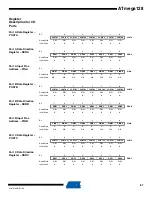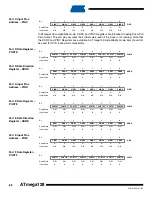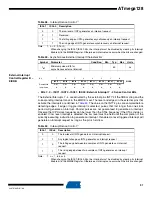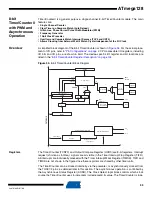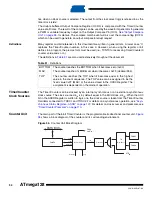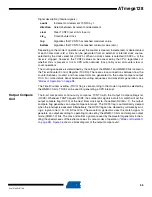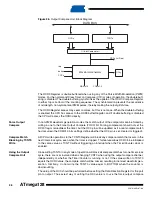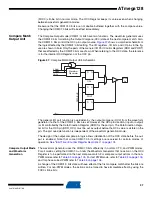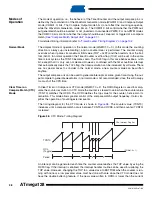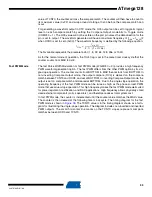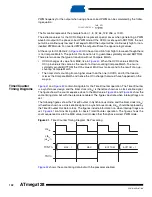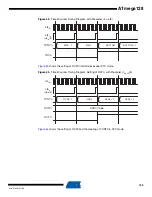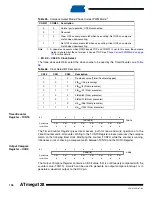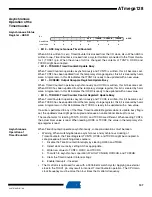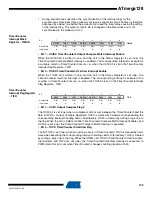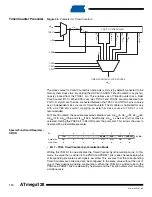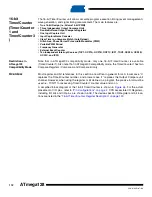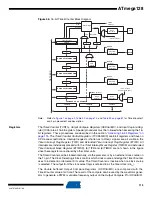
99
2467S–AVR–07/09
ATmega128
value of TCNT0, the counter will miss the compare match. The counter will then have to count to
its maximum value (0xFF) and wrap around starting at 0x00 before the compare match can
occur.
For generating a waveform output in CTC mode, the OC0 output can be set to toggle its logical
level on each compare match by setting the Compare Output mode bits to Toggle mode
(COM01:0 = 1). The OC0 value will not be visible on the port pin unless the data direction for the
pin is set to output. The waveform generated will have a maximum frequency of f
OC0
= f
clk_I/O
/2
when OCR0 is set to zero (0x00). The waveform frequency is defined by the following equation:
The N variable represents the prescale factor (1, 8, 32, 64, 128, 256, or 1024).
As for the normal mode of operation, the
TOV0
flag is set in the same timer clock cycle that the
counter counts from MAX to 0x00.
Fast PWM Mode
The fast Pulse Width Modulation or fast PWM mode (WGM01:0 = 3) provides a high frequency
PWM waveform generation option. The fast PWM differs from the other PWM option by its sin-
gle-slope operation. The counter counts from BOTTOM to MAX then restarts from BOTTOM. In
non-inverting Compare Output mode, the output compare (OC0) is cleared on the compare
match between TCNT0 and OCR0, and set at BOTTOM. In inverting Compare Output mode, the
output is set on compare match and cleared at BOTTOM. Due to the single-slope operation, the
operating frequency of the fast PWM mode can be twice as high as the phase correct PWM
mode that uses dual-slope operation. This high frequency makes the fast PWM mode well suited
for power regulation, rectification, and DAC applications. High frequency allows physically small
sized external components (coils, capacitors), and therefore reduces total system cost.
In fast PWM mode, the counter is incremented until the counter value matches the MAX value.
The counter is then cleared at the following timer clock cycle. The timing diagram for the fast
PWM mode is shown in
. The TCNT0 value is in the timing diagram shown as a histo-
gram for illustrating the single-slope operation. The diagram includes non-inverted and inverted
PWM outputs. The small horizontal line marks on the TCNT0 slopes represent compare
matches between OCR0 and TCNT0.
f
OCn
f
clk_I/O
2
N
1
OCRn
+
(
)
⋅ ⋅
-----------------------------------------------
=



